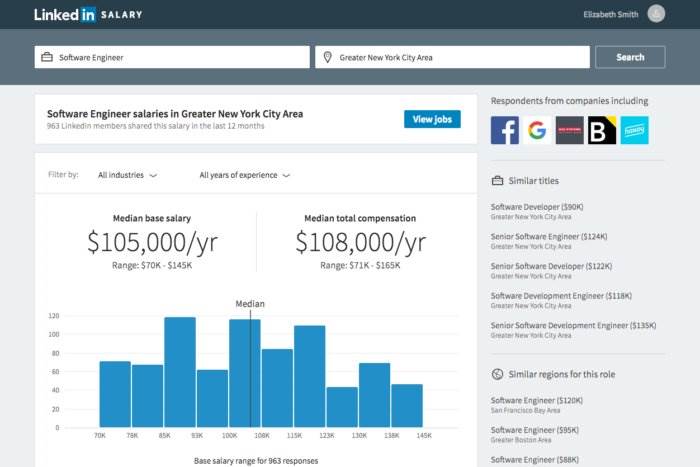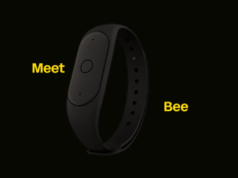Discussing salaries at work can be tricky. LinkedIn is trying to take the guesswork out of calculating fair compensation by giving users the ability to view aggregate data about salary trends by profession.
The new LinkedIn Salary service will show users of the enterprise social network a graph of the total compensation for a particular title in a particular location. For example, they could look up how much a software engineer makes in New York City. (Spoiler alert: it’s a lot of money.) After that, it’s possible to further slice and dice the data, to see differences in pay between different industries, levels of education, and even degree field.
It’s a product that could be a boon to employees everywhere, who will have an easier time figuring out what a fair market rate is for their services. People who are evaluating how much to pay employees could also tap into the information to figure out if they’re being fair.
Getting access to that data comes at a cost: users have to give LinkedIn information about their compensation in order to see the data. In order to protect users, LinkedIn is only collecting salary data and certain types of demographic information about them like education and company. Thus far, over a million people have already added their salary data into the system.
After that, the information is stored securely in a way that doesn’t even allow LinkedIn employees to view individuals’ compensation information, according to Dan Shapero, the company’s careers product leader. He said that data submitted through the Salary product can’t be traced back to those people through the product. Furthermore, Shapero said that users can rest assured that their individual data will not be shared.
“We would never show the data that you put in associated with you or your profile,” Shapero said.
People who want to see the salary information without contributing their own details can pay for one of LinkedIn’s premium plans.
Shapero also said that the company will wait until it has enough information about particular professions before offering insights about how much money people get paid.
That means some very niche professions are going to get left out for the time being, but he sees a future where it might be possible to aggregate a bunch of similar fields together and provide them with useful information.
In the future, Shapero said that the company plans to do more work associating users’ skills with pay, so that people can see how they can develop themselves professionally to grow their earnings potential. That could then be tied into Lynda, the e-learning service that LinkedIn acquired in 2015.







